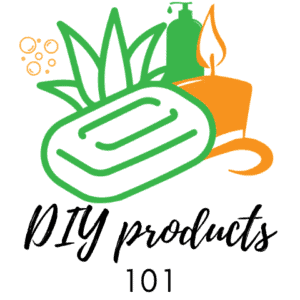If you are making your own soap at home, then it is essential to know if spraying alcohol is something you should do or not. Today we’ll finally give the answer to this burning question.
Spraying alcohol on homemade soap helps against soda ash and reduces air bubbles on the top layer of the soap. It will also be helpful if you use it between layers as it helps to glue those layers.
Whether you’re seeking a fun hobby, saving money, or pursuing a new business venture, our step-by-step guide makes crafting spa products enjoyable and easy, perfect for hobbies, saving money, or starting a business. Explore 126+ recipes, from soaps to lotions, with our beginner-friendly Quick Start Guide. Ditch store-bought products with unknown chemicals and embrace personalized, high-quality creations that cater to allergies and sensitivities using The Handcrafter’s Companion.
Why spray alcohol on homemade soap?
Using alcohol to make soap is optional.
Adding 99% isopropyl alcohol to your recipe is recommendable for the following reasons:
- If you’re working with melt and pour, then you’ll notice that from time to time bubbles form on the upper area. Spraying alcohol will be able to break the air bubbles and create a smooth surface.
- Spraying alcohol will also be helpful if you use it between layers as it helps glueing those layers.
- If you’re making Rose Clay Melt and Pour, it can be useful using rubbing alcohol, which is extremely helpful to dissolve oxides and clays.
Usage of isopropyl alcohol in cold process soap
If this reaction happens, you’ll notice that a white film will form at the top of your soap par, but it isn’t dangerous at all. It’s aesthetically unpleasant, so many people don’t like it.
You can avoid soda ash from appearing in your soap bar if you spray the top of your CP soap after fifteen minutes of pouring.
Do you have to use rubbing alcohol when making soap?.

Rubbing alcohol is an optional agent you can use in your recipe if you’d like to avoid soda ash, but it’s definitely not a must. The problem is that when you’ve used too much lye in your recipe, which leads to unsaponified lye, you’ll end up with soda ash.
However, if you suspect that it may happen in your current soap batch, you can spray rubbing alcohol on the fresh batch after pouring. This way, you will be able to prevent this problem, leaving it with even aesthetics that will be accustomed to your wishes.
Spraying rubbing alcohol on your soap is not necessary, but it can be helpful if you’d like to prevent certain aesthetic issues.
What alcohol spray is used in soap making?
As mentioned throughout this article, the alcohol spray you’ll be using in soap making is 99% isopropyl alcohol or rubbing alcohol, as it is commonly known. It is one of the few extra resources that every soapmaking enthusiast must have as a multi-purpose product.
Although we’ve discussed some of the uses of rubbing alcohol above, here we have a few other uses of it that you probably don’t know about:
- If you spray rubbing alcohol on top of cold process soap, you will prevent it from producing soda ash.
If you’re making melt and pour soap, then you can spray it between layers so you can disperse micas. This way, you will contribute to the adhesion of both layers. - Last but not least, rubbing alcohol is excellent if you’re trying to clean spills.
Can I use vodka instead of rubbing alcohol for soap making?
It can be helpful and may have the same effect as rubbing alcohol if you use it at 40%. Please note that, even though you can use vodka as a replacement for rubbing alcohol, the latter option is a better choice. It is easier to find, and it’s less expensive.
Plus, utilizing vodka in your soap won’t add any extra effect to it, especially if we consider that it’s mainly used for aesthetic purposes. So, my advice is to continue using rubbing alcohol and leave vodka for other purposes.
Do I need to spray alcohol on all types of homemade soap?
With that being said, you don’t have to spray alcohol in your soap all the time. If you suspect that you’ve utilized too much lye and that, for some reason, it hasn’t saponified completely, then we advise you to spray rubbing alcohol after fifteen minutes of pouring the fresh soap batch. It will keep your soap batch as clean as possible.
Conclusion
Rubbing alcohol, or isopropyl alcohol 99%, is an optional addition to your homemade soap if you’d like to prevent the apparition of soda ash or bubbles at the surface of it. All you need to do is spray it through the surface 15 minutes after you’ve poured it.
Some people like using vodka (at 40%), while others like using the regular rubbing alcohol you find at most pharmacies. Either way, it will remain as an “extra” step you can opt for adding to your soapmaking process.
